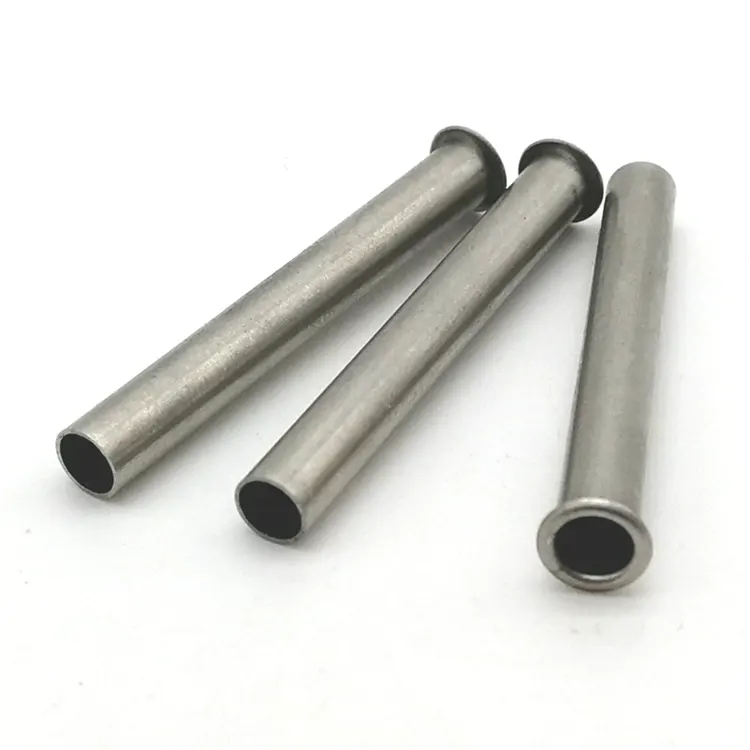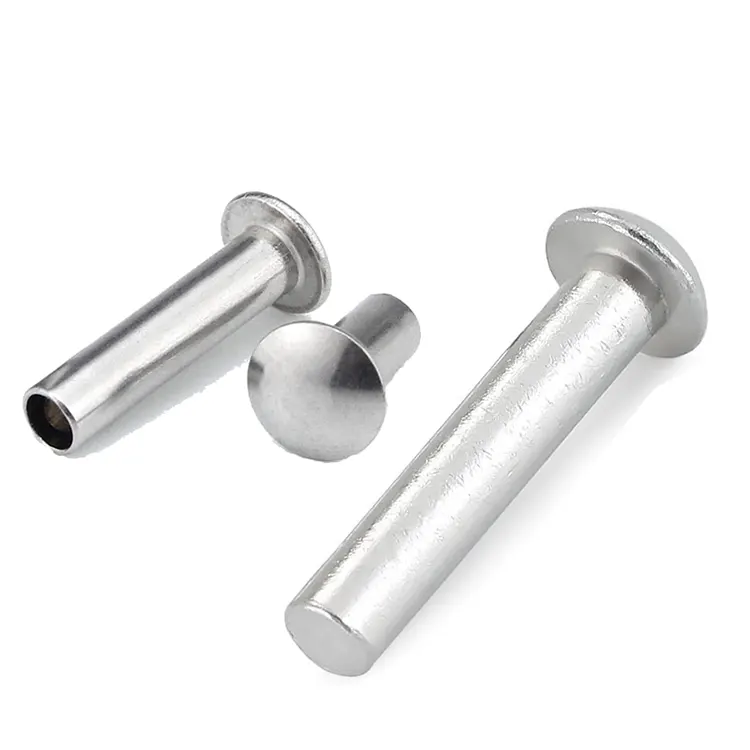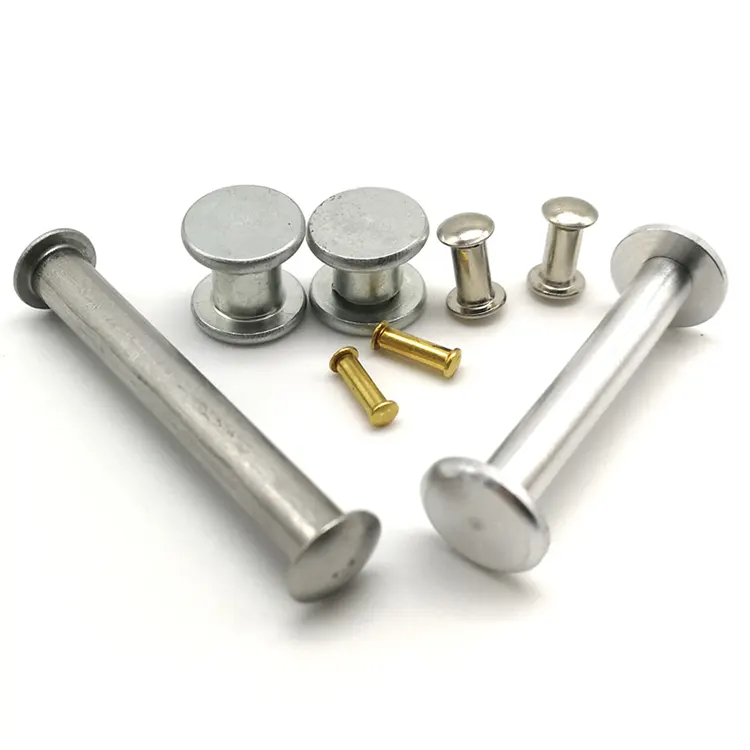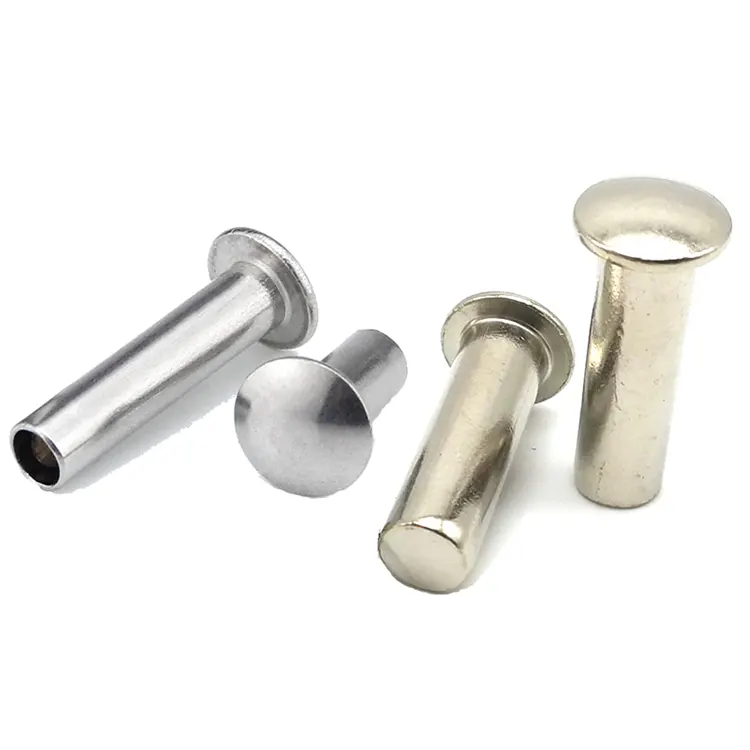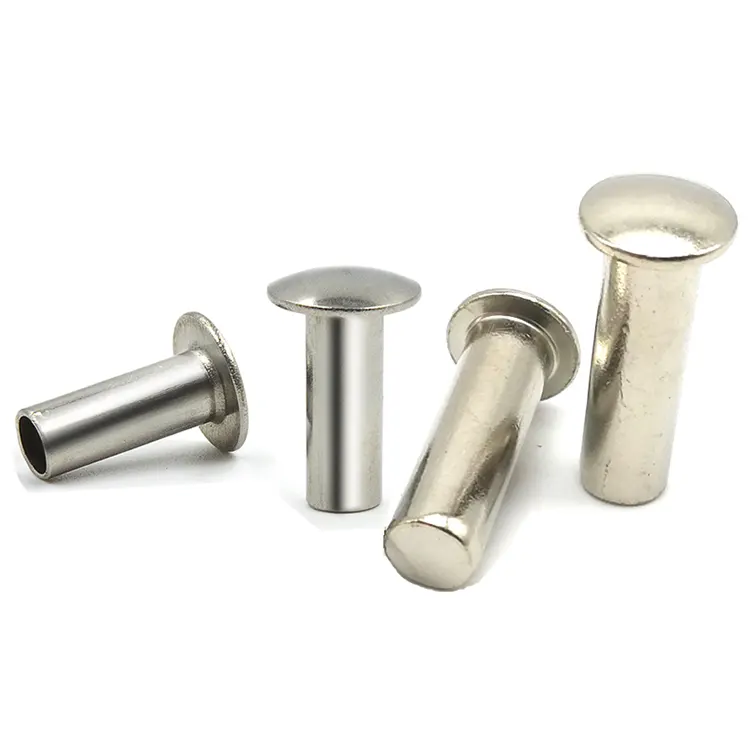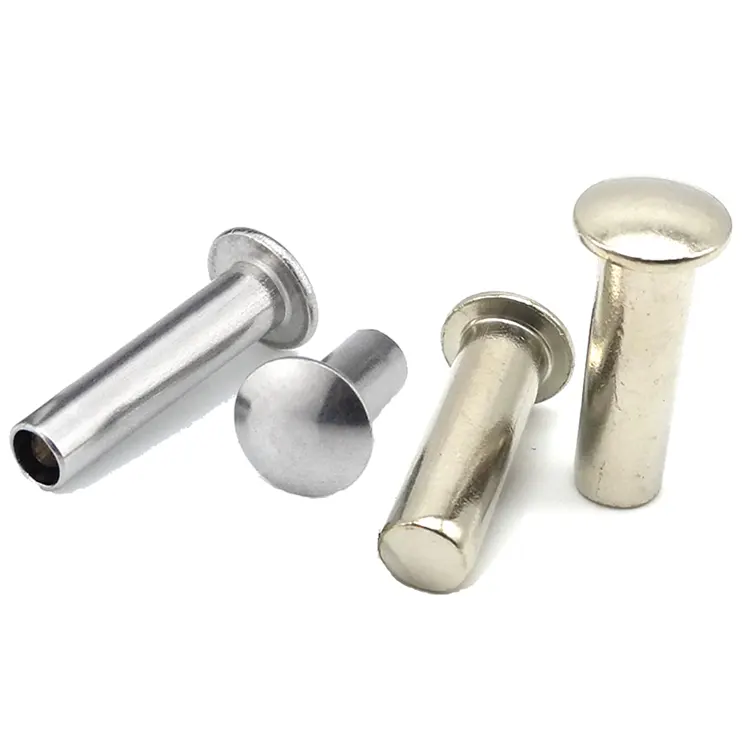Særlige nitter
One of Chinese manufacturer of Special Rivets, offering excellent quality at a competitive price, is Notin. Feel free to get in touch.
In the field of mechanical manufacturing and assembly, rivets are a common fastener used to professionally connect two or more parts. According to the degree of standardization, rivets can be divided into two categories: standard rivets and non-standard rivets. The size, shape and material of standard rivets are uniformly specified, while non-standard rivets are customized according to specific needs. The following will introduce the characteristics and applications of non-standard rivets from multiple aspects.
What are non-standard rivets?
Non-standard rivets are also called special rivets. They refer to rivets that do not meet national standards or industry general standards. Their size, material, structure and other parameters are designed and manufactured according to the specific needs of customers. Due to the different connection requirements of different industries and equipment, standard rivets may not meet the requirements of certain special scenarios, so non-standard rivets came into being.
What are the characteristics of special rivets?
(1) Strong customization: Non-standard rivets can be personalized according to factors such as the use environment, stress conditions, and assembly methods to ensure that they perform well in actual applications.
(2) Diverse materials: In addition to common carbon steel and stainless steel, non-standard rivets can also be made of special materials such as aluminum alloy, copper alloy, titanium alloy, etc. to meet different corrosion resistance, strength and weight requirements.
(3) Flexible structure: The structure of non-standard rivets can be adjusted according to needs, such as head shape, stem diameter, length, etc., and can even be designed to be hollow, semi-hollow or other special shapes.
- View as
Universalhovednitter
En universalhovednitte er en type mekanisk forbindelseskomponent i nitteklassifikationssystemet. Dens hoved har en flad bueformet struktur og er velegnet til sammenføjning af materialer som tynde metalplader, læder, lærred og træ. Denne type nitte er fastgjort gennem kolde eller varme nitteprocesser og har fordelene ved nem installation og omkostningseffektivitet i ikke-forseglede trykbærende miljøer. Sammenlignet med lignende produkter såsom forsænkede nitter, er universalhovednitter mere velegnede til nitning af tynde metalplader eller ikke-metalliske materialer som læder, lærred og træ på grund af deres fremspringende halvkugleformede hoveddesign.
Læs mereSend forespørgselTodelte nitter
Todelte nitter består typisk af to dele: en hunnitter og en hannitter. Hunnitten har et indvendigt hul i den ene ende og en fast ende i den anden. Den mandlige nitte, som en solidtrinnitte, passer ind i det indvendige hul på hunnitten. For at bruge, skal du først fastgøre hunnitten til en genstand, derefter indsætte hannitten i hunnitten og hamre den på plads, hvorved de to genstande forbindes. Dette design forenkler installationen og giver samtidig pålidelig forbindelsesstyrke. Nuote Metals har 10 års erfaring med denne slags todelte nitter, velkommen til at sende os din tegning.
Læs mereSend forespørgselTruss Head nitter
Nuote Metals fremstiller og sælger truss head nitter. Vi er beliggende i Dongguan, Kina, og vi har over 40 maskiner med kold retning, der er i stand til at producere en bred vifte af nittespecifikationer og -typer. Vi tilbyder også skræddersyede nitter. Truss hovednitter er en almindelig nittet komponent, der består af et skaft, hoved og hale. De er kendetegnet ved et stort, fladt hoved og en hul eller solid hale, hvilket giver fremragende tætnings- og vandtætningsegenskaber.
Læs mereSend forespørgselStålnitter med rund hoved
Nuote Metals fremstiller og sælger stålnitter med rund hoved i en række forskellige finish, herunder zinkbelægning, fornikling og Dacromet-belægning. Nitter med rund hoved har en halvcirkulær hovedform, der tilbyder fremragende træk- og forskydningsstyrke, der er i stand til at modstå store belastninger. Det runde hoveddesign gør det muligt for nitten bedre at tilpasse sig forbindelseskomponenten under forbindelsen, hvilket forbedrer samlingens stabilitet og tætning.
Læs mereSend forespørgselStålnitter
Kulstofstålnitter er et almindeligt mekanisk fastgørelseselement, der bruges i en lang række industrielle og daglige produkter. Deres primære funktion er at forbinde to eller flere komponenter sikkert sammen, hvilket skaber en stabil struktur. Kulstofstålnitter er populære på grund af deres styrke, holdbarhed og omkostningseffektivitet. Nuote Metals har fremstillet kulstofstålnitter i over et årti. Beliggende i Dongguan, Kina, kendt som "World's Factory", byder vi besøgende fra hele verden velkommen til at besøge os.
Læs mereSend forespørgselStålnitter med panhoved
Stålnitter med panserhoved er et almindeligt industrielt fastgørelseselement, der bruges i en bred vifte af applikationer, herunder bilindustrien, luftfart og byggeri. Nuote Metals har specialiseret sig i produktion af nitter af stålpandehoveder, som sælges over hele verden. Vi tilbyder et bredt udvalg af nitter lavet af forskellige materialer, herunder messing, rustfrit stål, aluminium og kobber. Vi kan også tilpasse vores produkter med forskellige overfladebehandlinger, såsom galvanisering, bejdsning og anodisering, for at imødekomme kundernes krav.
Læs mereSend forespørgselWhat are the characteristics of special rivets?
(1) Strong customization: Non-standard rivets can be personalized according to factors such as the use environment, stress conditions, and assembly methods to ensure that they perform well in actual applications.
(2) Diverse materials: In addition to common carbon steel and stainless steel, non-standard rivets can also be made of special materials such as aluminum alloy, copper alloy, titanium alloy, etc. to meet different corrosion resistance, strength and weight requirements.
(3) Flexible structure: The structure of non-standard rivets can be adjusted according to needs, such as head shape, stem diameter, length, etc., and can even be designed to be hollow, semi-hollow or other special shapes.
Manufacturing process of special rivets
The manufacturing of non-standard rivets involves multiple links, mainly including:
1.Material selection: Select suitable metal or alloy materials according to the use environment. 2. 2.Cold heading or hot heading: Use pressure processing to form the basic shape of the rivet into the metal blank.
3.Turning or milling: Fine-process the details such as the head and stem of the rivet to ensure dimensional accuracy.
4.Surface treatment: Such as galvanizing, nickel plating, anodizing, etc. to improve corrosion resistance or aesthetics.
Advantages and limitations of special rivets
(1) Advantages: They can meet special needs, improve assembly efficiency and connection reliability, and are suitable for complex or high-demand application scenarios.
(2) Limitations: Since they are customized products, the production cost is high, the delivery cycle is relatively long, and customers are required to provide detailed technical parameters.
How to choose suitable special rivets?
(1) Clarify the needs: Determine the key parameters such as the rivet's operating environment, stress conditions, and corrosion resistance requirements.
(2) Material matching: Select the appropriate material based on actual needs to avoid over-design that leads to increased costs.
(3) Communicate with suppliers: Provide detailed technical drawings or samples to ensure that the non-standard rivets produced meet expectations.
What are the main applications of special rivets?
(1) Aerospace: Aircraft, rockets and other equipment have extremely high requirements for the weight, strength and high-temperature resistance of fasteners. Non-standard rivets can be optimized according to specific needs.
(2) Automobile manufacturing: Certain special models or high-performance vehicles may require non-standard rivets to meet the needs of lightweight or high-strength connections.
(3) Electronic equipment: Precision instruments or small electronic equipment may require micro non-standard rivets to ensure the stability and compactness of the connection.
(4) Construction industry: Some special-structured buildings or decoration projects may use non-standard rivets to meet specific installation requirements.
Market status of special rivets
With the advancement of industrial technology, more and more industries have begun to use non-standard rivets to optimize product design. At present, non-standard rivet manufacturers are mainly concentrated in the Yangtze River Delta and Pearl River Delta regions in China, and can provide a variety of customized services. Due to the high unit price of non-standard rivets, its market size is relatively small, but the demand in the high-end manufacturing field continues to grow.
Future development trends
(1) Lightweight design: With the improvement of energy-saving and environmental protection requirements, non-standard rivets made of lightweight materials will be more popular.
(2) Intelligent production: Automated equipment and digital management will further improve the production efficiency and quality stability of non-standard rivets.
(3) Wider application: Emerging industries such as new energy and robotics may drive the growth of demand for non-standard rivets.
In summary, special rivets are highly customized fasteners that can meet special needs that standard rivets cannot meet. Although its production cost is relatively high, it plays an irreplaceable role in industries such as aerospace, automobiles, and electronics. In the future, with the advancement of manufacturing technology, the application scope of non-standard rivets is expected to further expand.


